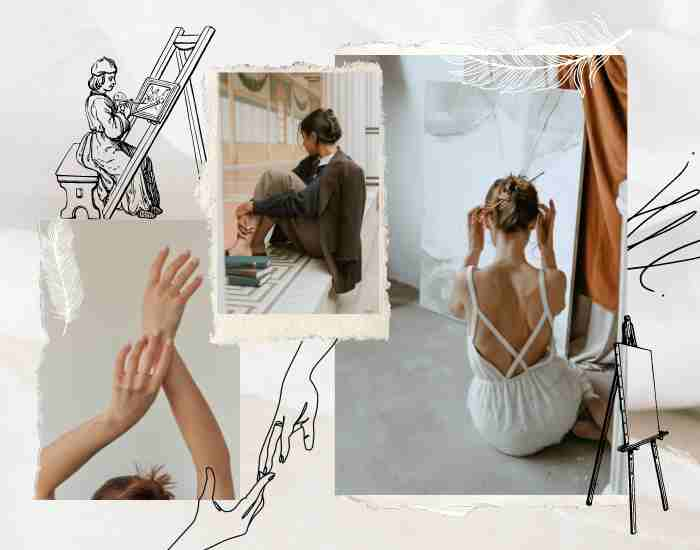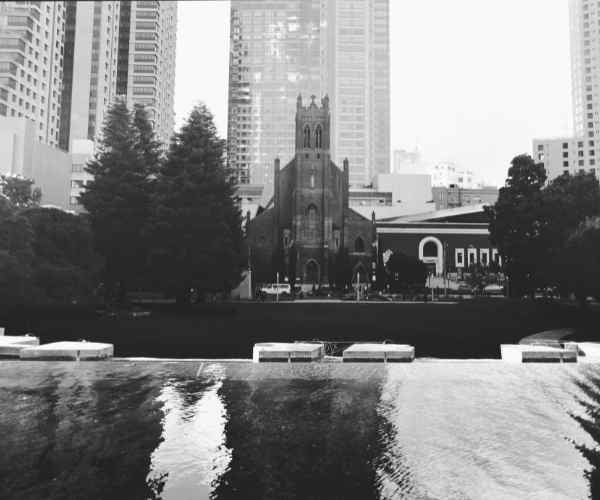Although it has been branded as non-objective and non-representational, abstract art incorporates medium which diverges from portraying realistic scenes and actual objects. Non-objective art disregards the literal painting as it uses two dimensional shapes, colors and textures to convey messages and feelings which are different from realism and figurative art where the ultimate goal is active portrayals of actual objects.
In case of non-objective painting, the art form creates a conversation without words, every painting using shapes, colors and other two dimensional objects encourages the viewer and the actual feeling is much stronger, for example, Wassily Kandinsky who was one of the first non-objective art practitioners in his works relied on the concept of language of color and special geometric forms to embody various images.

The Evolution of Abstract Art
Origins and Early Influences
Artistic abstraction dates back to the beginning of the 20th century and can be traced to the cubist movement which was championed by Pablo Picasso and Georges Braque. Picasso, Braque and their supporters introduced a new form of art which depicts several views of an object at the same time, shattering notions of traditional representation. Cubism made significant strides towards changing current perspectives on abstract art by seeking the object’s internal structure rather than focusing on its surface.
Wassily Kandinsky’s contribution to the progress of abstract art cannot be overstated. He contributed to abstract expressionism, which turned away from illustrating aspects of the natural environment, to probing ways whereby shapes and colors produce feelings in viewers. His practice of using oil paints on canvas ushered in an appreciation of abstract constructs that could evoke rich and diverse emotions.
Because these initial artists sought to push the boundaries of artistic expression, new approaches were used, which stretched the definition of ‘art’. A case in point is Piet Mondrian, who employed neoplasticism to design pieces of art that were based on grid patterns of straight horizontal, vertical lines, and a limited palette of colors and shapes, thus reducing painting to its simplest form.
Modern abstract art In today’s world, abstract art continues to exist in its own right as an extension of art. Mark Rothko and Jackson Pollock have raised the bar of abstract art with their color field painting and drip painting techniques. Wide areas of Rothko’s color field paintings are painted in even layers of color, while Pollock’s drip paintings consist of paint that was applied in a free and uncontrolled movement of his arms and body, which further expands the notion of what painting can be.
Today’s abstract art goes beyond canvas painting to include using technology and the internet as an avenue to reach other forms of creation. This marks the continuation of the abstract experiments that have begun in the art world where artists come up with ideas which are aimed at capturing the attention of the viewers. For example, the use of computers in the creation of artworks can result in pieces that develop in response to the movements and actions of participants, and thus, in a way, enhance experiencing the notions of abstraction.
There have also been reports and studies emphasizing these techniques of modern art, including reports by the Museum of Modern Art (MoMA), and how they transform the usual concept of abstract art as well as the evolution of other art. Pollock, for instance, is frequently recognized as modern art which is usually placed in the context of the development of abstract expressionism and has a far-reaching effect on the contemporary art practice.
Key Elements of Abstract Art
How do shapes and colors influence abstract art?
Geometric forms and colors are frequently used in abstract art to give depth and the illusion of movement. Such properties are key aspects contributing to the multitude of emotions invoked by artworks. Geometric forms in the form of circles, squares, and triangles for example may elicit order or havoc depending on their placement. A case in point is the composition of Piet Mondrian where there is a grid of rectangles in primary colours to evoke balance and harmony.
Formulas color significantly contributes to how these shapes interact with colors and the other elements. A color wheel allows an artist to pick colors that are visually interesting via complementary, analogues or triadic color schemes. Research from the Color Association of the United States shows that different colors can evoke various emotional responses. Opposed to warm colors such as red and yellow that stir up notions of warmth and energy, cool colors like blue and green have the opposite effect, which is peacefulness and serenity.
Jackson Pollock’s drip paintings are a great example of how to engage with the audience by incorporating bright colors and irregular shapes within the piece Jackson Pollock’s technique of pouring paint on canvas deeply immerses the viewer into the painting because of its multi-layered texture. Pollock deciphered the notion of how abstract art works, color, and shapes are used with the intent to invoke emotions in the audience.
Do textures and techniques enhance abstract paintings?
A palette knife and impasto are powerful tools that help bleed out a more textured cultural style in abstract paintings. The texture added by the implementation of the palette knife increases the dimensions within the abstract painting. Impasto, which requires paint to be applied in thicker coats, increases the dimension even more by rendering brushstrokes and multiple coats of paint showing through. It has been emphasized in the Journal of Aesthetic Education that texture combined with different angles alters the way a single painting can be viewed.
To an artwork, the combination of acrylic paints and gold leaf is necessary so as to achieve the desired texture and complexion. The addition of gold leaf provides a reflective tone that ameliorates together with the light, fostering a highly diverse viewing experience. On the other hand acrylic paints are adaptable and dry quickly giving the artist a base to work on layering and finishing techniques.
Abstract artists are known for using and mixing materials capable of achieving their goals. Sand is an inscrutable element for materials and same as metallic paints creates plenty of textures and visual disruptions. One of the Abstract art scientists, Bridget Riley, employs straight lines and marked areas in her works so as to give the impression of motion, which demonstrates the essence of texture and technique in abstract painting.
Grasping abstract art
What does abstract art mean to those who view it?
The crux of abstract art is to make its viewer feel – an emotion or an intention. Unlike representational which has a defined style, theme, plot or image embodying the artwork, abstract paintings do not tell a story or have a particular objective. Rather it makes its viewer think about what it is trying to convey through external constructive criticism.”
Abstract expressionism is one of the movements in abstract art which focuses on the feelings and motivations of the artist. Take for example Mark Rothko’s color field paintings; they are composed of vast unmodulated swathes of color intended to convey a sense of inner stillness and reflection. Rothko prompts his public visually to come up with significance to the color and form and not necessarily with the imagery.
Another instance of how abstract art lacks objective meaning is Mondrian’s application of three basic colors and geometric shapes. Content is not the only resource Mondrian’s works especially depend on; the clue his style gives is describing in itself through the graphics. His works in grids are meant to stimulate the same questions as Rothko’s paintings were regarding images of colors and shapes and their feelings.
What role do emotion and intuition play in abstract art?
Most importantly, how the viewer responds to the abstract artwork is fundamental to understanding its overall aim which is primarily to generate emotions in the viewer. The viewer may have to look really deep into the piece, as there may not be a specific focal point that would stand out, everything from the color, shape and texture holds value in the piece.
For example, Joan Miró’s works come off as abstract and make excessive use of shapes and colors. The effect that it offers has to be experienced instead of rationalized. The core concerns that one can draw upon through these intuitions showcases the strength of abstract art with emotions that are sensitive and do not have a set representation.
Furthermore, research conducted by the School of Art at the University of Edinburgh suggests that abstract art is verbal in its emotional appeal. Allowing them to determine the core elements of the piece allows for enhanced interaction with the piece as they formulate it with their projections of feelings and experiences.
How does abstract art reflect in popular culture?
As for popular culture dated back from advertising to media and fashion, abstract art becomes an integral part of the ecosystem. The usage of being memorable is effective and so is the utilization of vivid geometric shapes, colors, and compositions, interlacing bespoke abstract designs in branding and graphic designs.
Take advertising campaigns as an example; there is a greater likelihood of adopting an abstract art style with the eventual goal of reaching out to an audience emotionally. When it comes to marketing, companies like Nike and Apple frequently use abstract colors to explain the need for modern designs.
As one of the greatest fashion trendsetters, Issey Miyake, is known for his abstract textiles. Abstract clothing is now energized by the focus of modern clothing design. High fashion and streetwear are both often characterized by fabrics with bold colors and abstract prints.
Movie and TV show titles are also other platforms that make use of abstract materials to enhance graphics of the audience. The use of artistic abstractions in this content improves the viewers experience as well as the content’s artistic quality.
If you would like to start investing or even earning from buying abstract art pieces, you must first consider:
Abstract pieces require artistic depth for them to be of value, they can be accumulated throughout the years but if the buyer does not have the proper appreciation for it then it can end up being a waste. Only those who are educated in areas such as art history or have an economic understanding of the art market will be able to make worthy collectors.
In short, turning new contemporary art into an investment requires understanding four different aspects:
Artistic Value: The piece requires context in order for it to carry significance and most artists only create a few impressive works.
Artist’s Reputation: Even abstract art has its giants such as Wassily Kandinsky or Mark Rothko, Their name alone increases the price of the painting making them desirable for investors.
Provenance Of Artwork: Most of the time artifacts are spurious, in that regard one must verify the history and ownership of the artwork.
According to the Art Market Report, investing in the abstract pieces of art is favorable in a financial sense, and the investors end up generating profit with some works growing in value over time. Some artworks of interested artists straight up trend in value with high appreciation once the artist gets more publicity and that particular piece gains prominence amongst the crowd.
Frequently Asked Questions
Which style of art would be said to be Abstract art?
Some of the dominant types of abstractionism are:
Abstract expressionism: The term denotes a mode of art that is said to be produced in a more ‘automatic‘, spontaneous or ‘uncusical’ way of creation. Billions like Mark Rothko and Jackson Pollock are categorized in the same school of thought .
Cubism: Georges Braque And Pablo Picasso step forward with an optimalization And integration approach of looking at objects from different perspectives not only one
Color Field painting: As seen in the works of Mark Rothko areas were large paintings that were color filled these later made emmersive efforts in the paintings.
Minimalism: This school brings out a more simplified version with drapes and fewer to vote for like Donald Judd Agnes Martin’s
What should I be looking for in regards to interpreting the abstract Artworks
Similar to how analyzing a work of art should encourage one to develop their own understanding through emotion rather than direct interpretation abstract paintings allow the viewer to retake the steps in creating the piece themselves through feeling, colors, and shapes. In the absence of a defined image or scene, there are no limitations, which emphasizes the importance of strong emotions in appreciating art.
Who are some well-known names in the abstract world of art?
Among the prominent figures in the abstract world are:
Wassily Kandinsky: Color geometer and one of the founders of abstract expressionism.
Jackson Pollock: Famous for his technique of drip painting and lively color compositions.
Mark Rothko: Best known for his emotionally expressive color field paintings.
What factors should I bear in mind when buying abstract art material?
Some things to keep in mind when buying abstract art material include:
Artist’s Reputation: The popularity of the artist and the degree of professional success that has been achieved.
Artwork’s Condition: Be sure to examine the piece for good condition and the manner of protection.
Fit Within Your Collection: How the new artwork fits your collection or works in your space.
Conclusion
In what way can abstract art help the art world progress?
Abstract art challenges the traditional definitions of art and creativity, making it a vast terrain to be explored and interpreted. Its existence sometimes reflects changes in cultural and artistic spheres, thus making it a valuable element in the art world. The dissemination of abstract art’s ideas in pop culture, as well as in advertising, fashion, or medial productions, confirms its relevance and importance for society today.
References
- Books: “Abstract Art: A Global History” by Daniel Herwitz, “The Abstract Art of the 20th Century” by Charles Harrison.
- Articles: Research articles on abstract art trends and market analysis from Art Market Report and Journal of Aesthetic Education.
- Resources: Wikimedia Commons for public domain images of abstract art, artnet for market insights and artist information.
More Post
- How do Classic Art and Architecture Shape Modern Masterpieces? Reviving Renaissance Techniques
- How Creative Expression Enhances Mental Health? Art Therapy for Emotional Healing
- How do Painting and Photography Influence Each Other? “The Art of Blending
- How Urban Landscapes Inspire Modern Art?(Exploring Cityscapes and Skylines)
- Exploring the Evolution and Techniques of Landscape Painting





